Documenting the recipe of Damni Dhokla is taking more time than expected. I am trying to dig deeper into the origins of this way making Dhokla. As we all know by now, Dhokla is steamed savoury cake made with a fermented batter of rice and lentils. The Khatta Dhokla has rice and chana-dal, Vateli/Dal Na Dhokla has soaked and crushed chana dal, the Khaman Dhokla is made using chickpea flour while Idra/White Dhokla can be made using the idli batter. The contemporary avatar of Dhokla includes Rava/Sooji Dhokla, Sandwich Dhokla, Green Peas Dhokla, Corn Dhokla and all versions imaginable!! Gujaratis consider Dhokla a snack/farsan that is sometimes part of the meal or served with tea or makes a meal on its own.
Re-creating Damni Dhokla in my kitchen had been on the top of my to-do list since I first learnt about the recipe in a Tarla Dalal book titled Non-Fried Snacks some 8-9 years back. The catch here was to find Banayan leaves to steam the dhokla!! I am conditioned to sticking to the recipe and planned to remain true to this habit for this recipe as well. After I began blogging and exploring more cookbooks about Gujarati cuisine the variety of Dhokla recipes I came across has been huge. But not all have Damni Dhokla in it. Ras-Sudha, a book by Sudhaben Mushi has it and the recipe varies quite a bit from Tarla Dalal’s version. Another compilation of Gujarati recipes by Agashiye also has the recipe and their version is a little forgiving in the sense they recommend steaming Damni Dhokla in a thali if Banayan leaves aren’t available. But none of these books mentions about the origin of this style of steaming (in Banayan leaves) Dhokla. Interestingly, the flour mix to Damni Dhokla seems like a congregation of grains, millets and legumes almost like bringing out all that remaining grains from the larder. If that wasn’t enough there is a portion of millet included in it as well. The way of steaming these dhokla seems quite medieval because leaves are being used as moulds here, indicating a way of life during times where no special contraptions existed in kitchens. I recently had the opportunity of visiting Jambughoda to learn more about Paniya, a flatbread made between Khakhra leaves (Flame of the Forest tree). This method was adopted to cook flatbreads on an open fire when griddles were still not part of the kitchens. I assume this could have been the reason for adopting this peculiar method of steaming Damni Dhokla in leaf moulds. Who knows?? The other mystery to be solved here is the name, Damni Dhokla indicates they origin from Daman, a tiny Union Territory tucked on Southern Gujarat coast ?? It is a quest and I will make edits here once I manage to find adequate answers. One thing I am sure about is that Damni Dhokla is known and popular towards the South of Gujarat and Mumbai while they are almost non-existent in other parts of Gujarat.
This June I decided to give Damni Dhokla a try, I have adapted the recipe from 3 references I had and taken up bits and pieces from each of them. The flour mix was milled at home, the leaves of Banayan and Badam tree were ferried from Purvi’s farm in Matar some 40 kilometres from Ahmedabad and the Dhoklas were steamed in our trusted Dhokaliya which has this plate with holes large enough to hold the cones we made from the Banayan leaves.
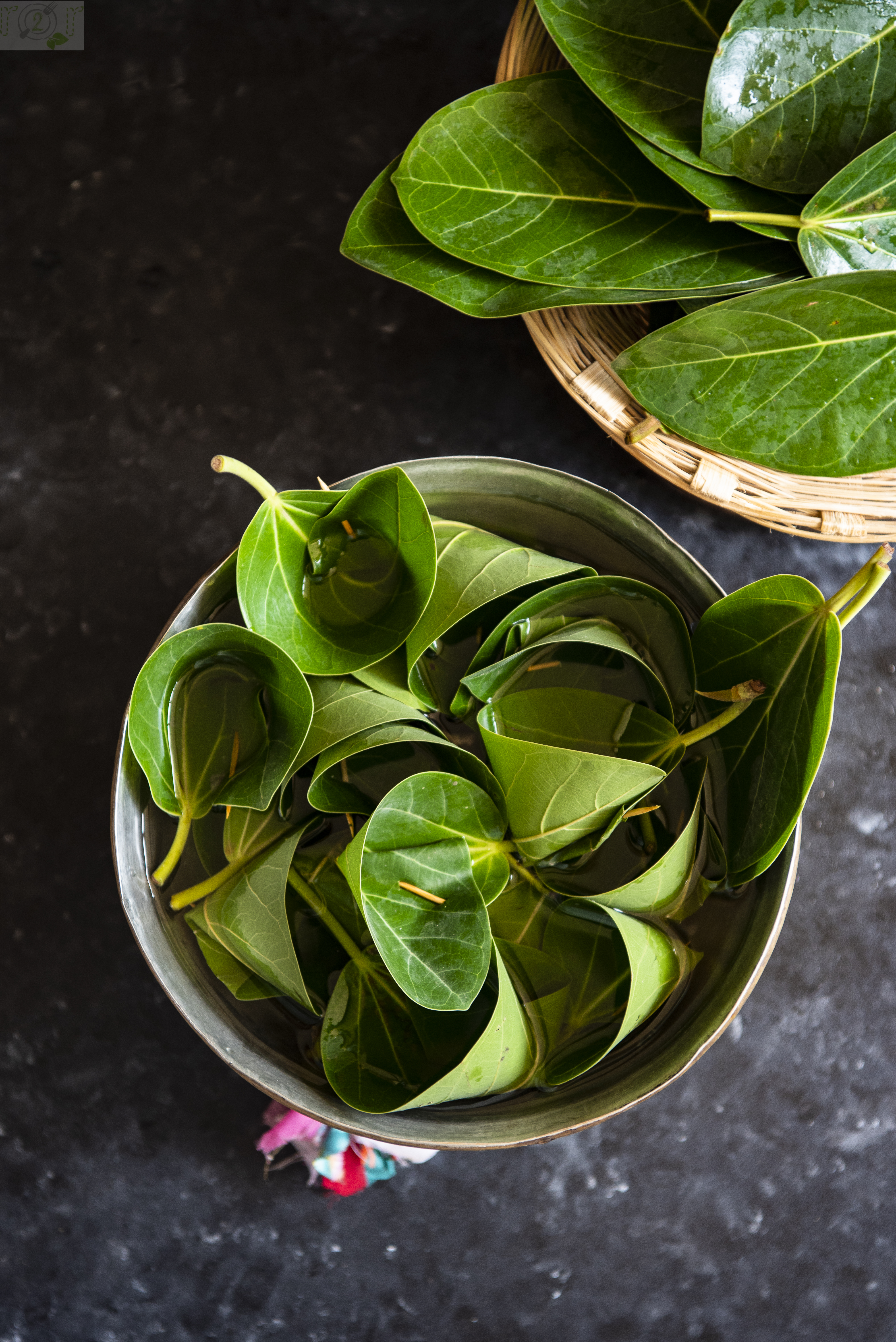
The batter was prepared on the evening before and set to ferment overnight. Interestingly, this Dhokla also calls for desi chana/black chickpeas, the need to be soaked overnight and boiled before adding to the batter. The batter is quite loose and it takes little effort to make these cones stay up but don’t worry if they refuse to stay straight whichever way these Dhokla do taste divine. The leaves also absorb moisture so the batter is kept a little runny. The Gujarati achar masala/methiya no masalo makes a huge difference so try to find a good one and add it or add the pickle masala you have at home or some masala from your pickle jar will be fine too. Temper the Damni Dhokla well and enjoy hot.
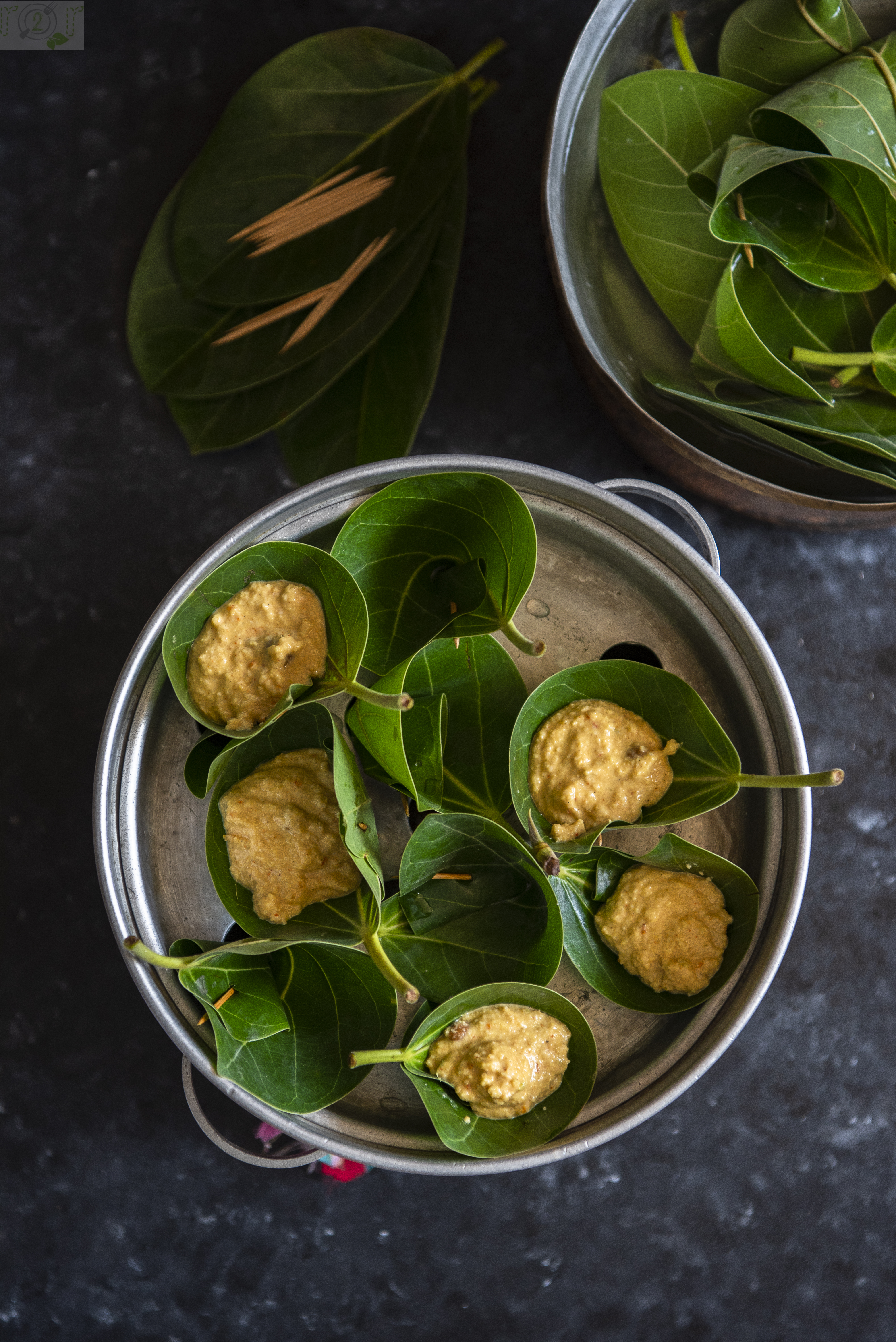
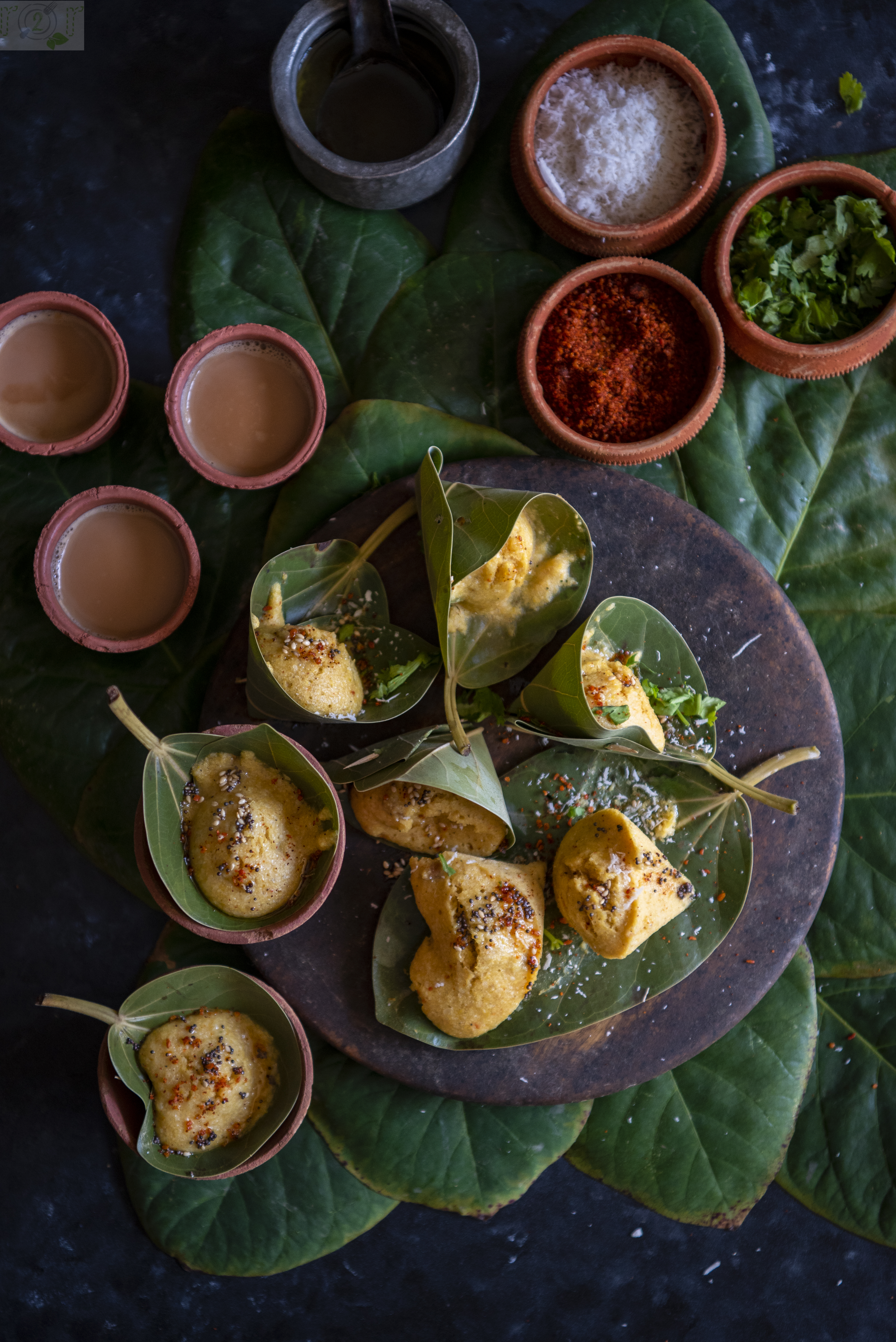
Damni Dhokla
Ingredients
- For the Damni Dhokla Flour Mix
- 1 + 1/4 cup small grained rice/parboiled rice
- 1/2 cup bajri/pearl millet
- 1/2 cup tuvar dal
- 1/2 cup yellow moong dal
- 1/2 cup chana dal
- 1/4 cup urad dal
- Rest of the ingredients
- 1/4 cup desi chana/black chickpeas
- 1 cup yogurt
- 2 tablespoons oil
- 1 tablespoon methiya masala
- 1/4 teaspoon turmeric powder
- 3 teaspoon ginger+chili paste ( or to your preference)
- 1/4 cup jaggery
- 1/4 teaspoon soda-bi-carb
- salt to taste
- To temper
- 1 tablespoon oil
- 1 teaspoon mustard seeds
- 1 teaspoon sesame seeds
- a pinch of asafetida
- finely chopped coriander leaves and shredded fresh coconut to garnish
- leaves of Banayan or Badam tree to steam the Dhokla, wooden toothpicks to stitch the cones/cups
Instructions
Prepare the flour mix by coarsely grinding/milling the rice, pearl millet and all the dals.
I have used a little over half of this mix to prepare the dhokla that served 4 to 5 members of our family.
In a large bowl add the flour mix, oil, yogurt, soda-bi-carb and mx well. The mixture will rest overnight to ferment.
Wash and soak the desi chana overnight.
After the chana have soaked pressure cook them in lightly salted water till done. Drain and keep aside
Wash and wipe dry the leaves.
Next day proceed to add the spices to the fermented mix.
Add the methiya masala, turmeric powder, jaggery, salt, ginger- chili paste and mix vigorously.
Add the chana. Let the batter rest for 15-20 minutes.
Prepare the cups or cones of the cleaned leaves. The dark green side will be inside of the cone.
Prepare and put the steamer to heat up.
Take a little batter in a bowl, add a pinch of soda-bi-carb, mix well and fill the leaf cones till 3/4th full.
Place them carefully on the perforated dish of the steamer.
Steam for 10-12 minutes.
Repeat unlit the mixture is used.
Alternatively, you can let the mix stay in refrigerator and steam dhokla when needed. Bring the batter to room temperature and add pinch of soda-bi-carb before you pour them in cups.
While the dhokla are steaming, prepare the tempering by heating oil, adding mustard seeds, sesame seeds, hing and turn off the flame as the seeds splutter.
Transfer the Damni Dhokla on a platter while they are still in the leaf cups, spread the tempering, chopped coriander and coconut and sprinkle little methiya masala on top.
Serve hot.
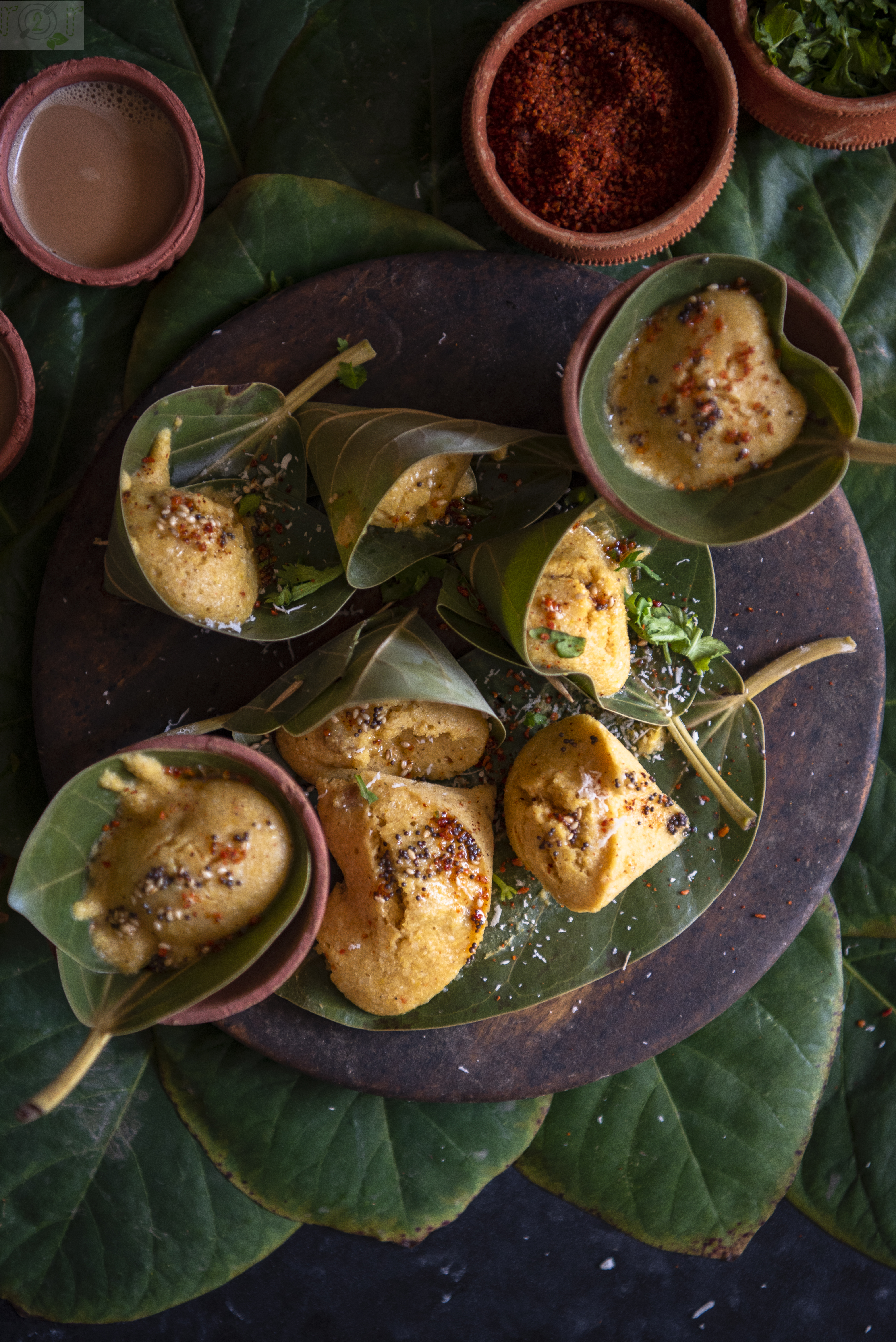

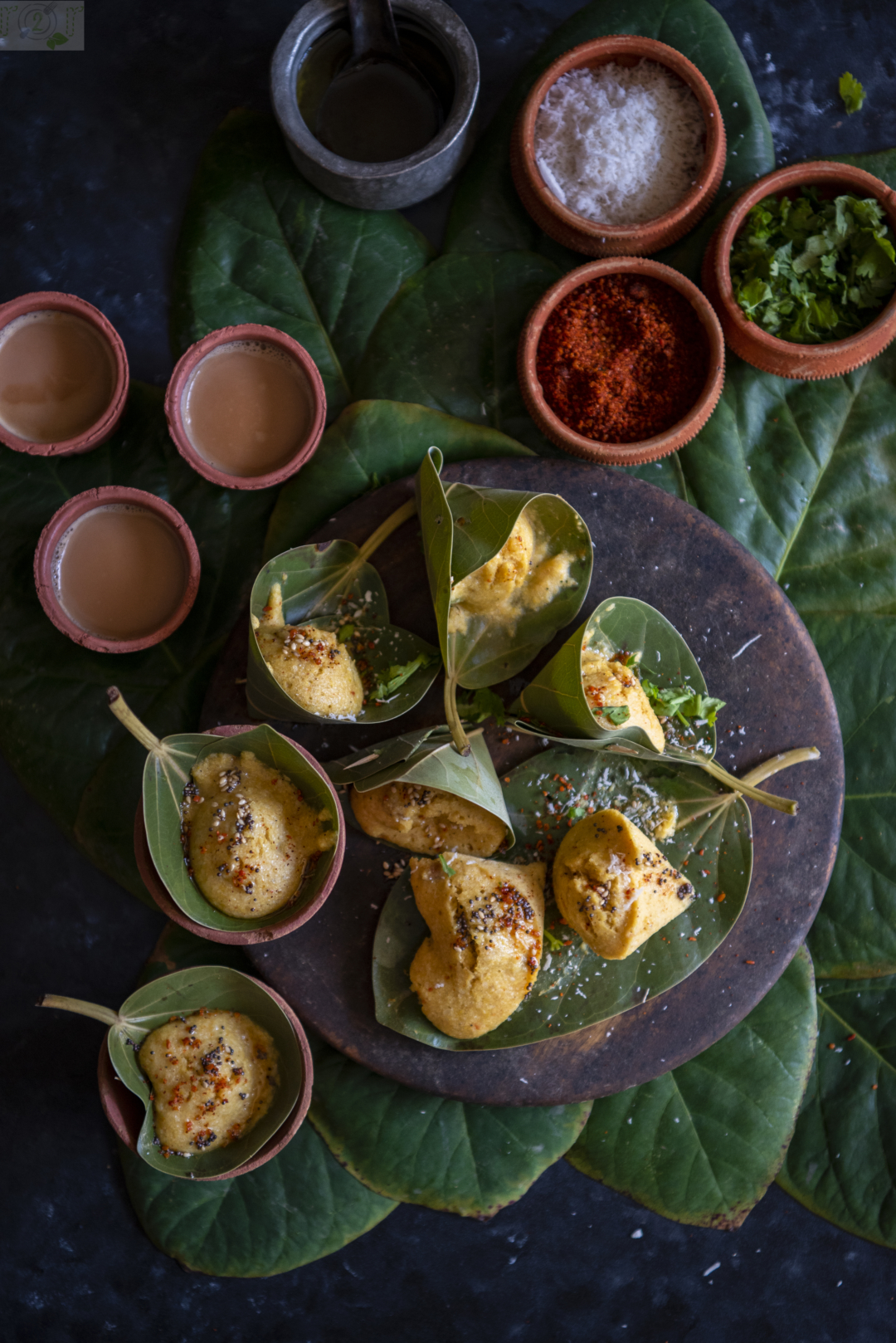

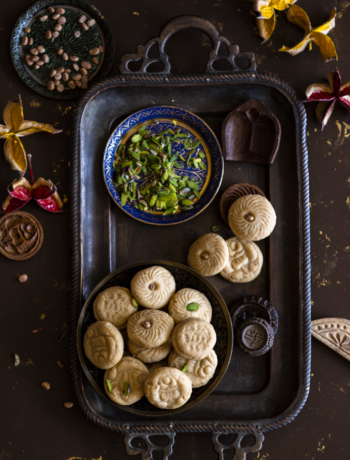
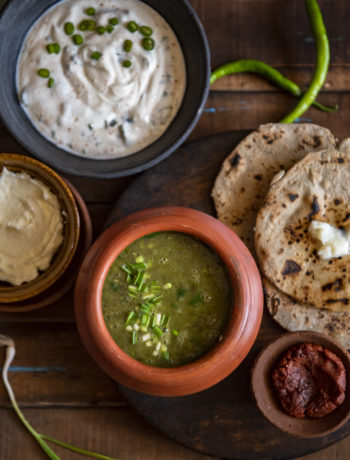
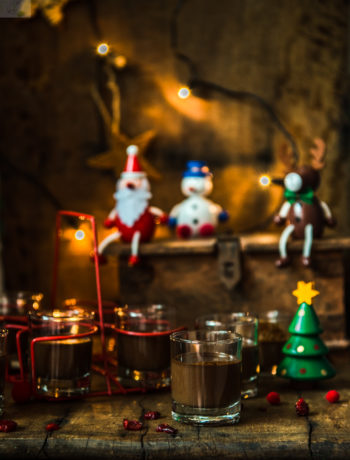
7 Comments
Gauri
August 27, 2023 at 8:33 pmHi , why is desi Channa added by pressure cooking it ?? Can it be added while preparing the flour with all other grains ??
Sheetal
August 28, 2023 at 3:37 pmwhole chana is added for bite.
Gauri
August 27, 2023 at 8:34 pmHi , why is desi Channa added by pressure cooking it ?? Can it be added while preparing the flour with all other grains ??
Secondly does banayan leaves have any other substitute??
Gauri
August 27, 2023 at 8:34 pmHi ,
Secondly does banayan leaves have any other substitute??
Sheetal
August 28, 2023 at 3:39 pmjackfruit or you can just use moulds. Banana leaves would be very tender.
Garui
August 27, 2023 at 8:35 pmWhat is the secret of adding desi Channa , seperatly by cooking it & not letting it ferment ??
Sheetal
August 28, 2023 at 3:40 pmyou can add boiled chana to the batter while you set it to ferment. Chana will need to be cooked first. As they will need more time to cook and cannot be added raw to the batter.